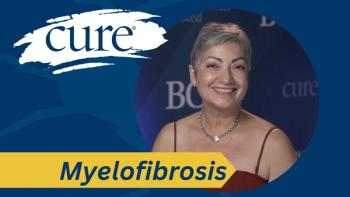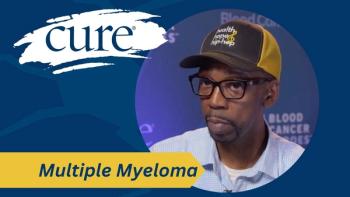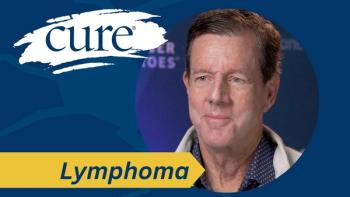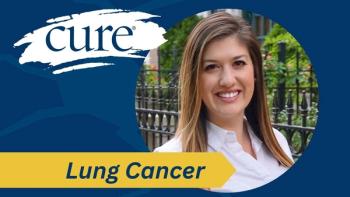
TIL Therapy Is One of Many ‘Phenomenal Discoveries’ in Melanoma Treatment
Lifileucel, a personalized adoptive tumor-infiltrating lymphocyte therapy, showed promising responses in patients with pretreated melanoma, according to cohort findings from a recent clinical trial.
Patients with heavily pretreated advanced melanoma who progressed on immunotherapy or a targeted therapy drug tended to have improved outcomes when administered lifileucel, a personalized adoptive tumor-infiltrating lymphocyte (TIL) therapy, according to data from certain groups of patients enrolled in the C-144-01 trial.
The objective response rate —the percentage of patients whose disease shrunk or disappeared as a result of treatment — was 31%, with the average duration of response not being met at about three years follow-up.
In an interview with CURE®, Dr. Omid Hamid, study author and director of clinical research at Cedars-Sinai The Angeles Clinic and Research Institute in Los Angeles, explained the significance of these findings.
CURE®: Can you provide a brief overview on study results from cohorts 2 and 4 from the C-144-01 trial that were presented at SITC, and what were the importance of these findings?
Hamid: This is an update on two cohorts of patients. Altogether, it is 153 patients who received lifileucel, which is the adoptive T-cell therapy. We were looking at how they did, what were the toxicities and where does this treatment lie for our patients.
Cohorts 2 and 4 were identical. … The patients in each cohort were much more heavily pretreated. So about three quarters of them — 75% — had greater than three lines of therapy. And we had patients who had up to nine lines of therapy, and they were high-risk patients, their LDH (lactate dehydrogenase) was high. That's (indicative of) a poor prognosis. They had bigger tumors, a significant proportion, never responded to PD-1 (blockade).
What we found interesting here in these patients, is that we had a
About 79% had reduction in tumor burden. All the variables that you looked at, all the subgroups had response, whether they were BRAF mutated, whether they had prior anti-CTLA-4 (therapies) — a significant proportion did here of prior anti-PD-1 and CTLA-4 combination was about 54% of patients, about 80% had CTLA-4 prior. So it's a very heavily pretreated cohort of patients.
Only 11% had one line of prior therapy, 81.7% had anti-CTLA-4, 53.6% (had) anti PD-1 and anti-CTLA-4. And guess what? We saw responses, we saw benefit.
What were the side effects observed with lifileucel?
The major toxicities happened within the first two weeks and were associated with lymphodepletion (when patients receive a short course of chemotherapy to kill T cells before receiving immunotherapy) and interleukin-2 — it was cytopenias, low platelets, low hemoglobin, low white (blood cell) count that comes from lymphodepletion, chills, fever, fatigue, diarrhea and changes in lab tests. These are all manageable.
We didn't see any late toxicities that were severe (nor) any novel toxicities, which means were there any toxicities that we had never seen with other immunotherapy.
What are the main takeaways you’d like patients to know about these findings?
What's important to tell patients is that wherever we did the resection, whether it was from an organ, lymph nodes, skin, under the skin or any other place, we were able to make the appropriate number of TIL cells, so a billion or more.
Not only that, the main point that comes from this is that we saw good responses (after) any line — even after BRAF inhibitor therapy, PD-1 therapy, even in those patients that were primary refractory that never had response to checkpoint inhibition with anti-PD-1 or anti-CTLA-4. And the indication is that, yes, this is an appropriate therapy for our patients. This is at the (Food and Drug Administration) for evaluation and approval.
This is feasible … in multiple areas that are non-university settings … and it's moving nearer and nearer to second- or third-line therapies.
At the current time, there are multiple clinical trials that are utilizing this type of therapy and are looking for improvements, whether it is to decrease the lymphodepletion, to change the TIL in a way where it's more immunogenic, to look at whether you need (IL-2) or some other drug, and those clinical trials are upcoming.
We've seen phenomenal results in melanoma but other solid tumors are forthcoming. Cervical cancer has amazing data. There are trials looking at this in lung cancer, head and neck cancer and other solid tumors.
What are the next steps for the use of TIL therapy for cancer?
Combination trials are forthcoming, (evaluating TIL therapy) in combination with anti-PD-1 antibodies to move this earlier or try to enhance the activity of the TIL. Where we are now is on a parallel track, while other checkpoint inhibitors, other types of immunotherapeutics, other targeted agents are being developed.
Adoptive T cell therapy is making a huge push for multiple types of melanoma. And the point I failed to make was that this trial did take mucosal melanomas and acral melanomas, and there was benefit there. Now, there are trials that are upcoming also looking at patients with melanoma and brain metastases, because there's some anecdotal evidence that this is a feasible approach for brain (metastases).
So we look forward to further data being presented to show us how to improve adoptive T cell therapy and where it has the greatest benefits and in these subgroups that require new and novel options.
How does adoptive TIL therapy work, and how is it different from other drugs like chimeric antigen receptor (CAR)-T cell therapy or checkpoint blockade drugs?
CAR-T cell therapy is quite different because it has the homing mechanism. The CAR portion is an antibody that targets antibodies bound on the tumor. CAR-T does not utilize a tumor harvest and TIL does. CAR-T uses apheresis and takes your T cells out. Adoptive T-cell therapy (does) because you're taking the T cells out of the tumor to have more tumor-directed TIL that can recognize multiple antigens, where CAR-T cell therapy only recognizes one antigen.
The way it's done is the patient is identified, an area is resected — about 1.5 centimeters — and that's sent out. … Those tumor-infiltrating T cells are taken out, cleaned and grown to billions of cells. Then they're activated and sent back.
The patient is sitting somewhere — maybe it's in Los Angeles, maybe it's in Kentucky —they come in and get the lymphodepletion a week before. They could do that in the hospital or in the clinic, but ultimately, they're admitted to a monitored bed where they receive the tumor-infiltrating lymphocytes.
Within six to 24 hours later, we begin an every six- to eight-hour infusion of interleukin 2 (or IL-2) to stimulate the immune system and the T cells. And they're monitored until their counts recover, until (side effects) are gone and then they're sent home. And that's a phenomenal option for patients.
Is there anything else you'd like to mention or say to the patient audience?
We've had phenomenal discoveries in melanoma. Over the last two decades, we've changed survival from months to years, six years, seven years and some more. And that’s average survival. Not only have we done that, but our patients with melanoma have led the way in finding newer therapies for other solid tumors, and most of this has been done through clinical trials.
I would say to our patients, “Bravo,” for them for being involved. They should always look for someone with expertise to give a secondary opinion, and that the future is bright because we have not only patient champions, but physician champions moving this field forward.
Transcription edited for clarity and conciseness.
For more news on cancer updates, research and education, don’t forget to




